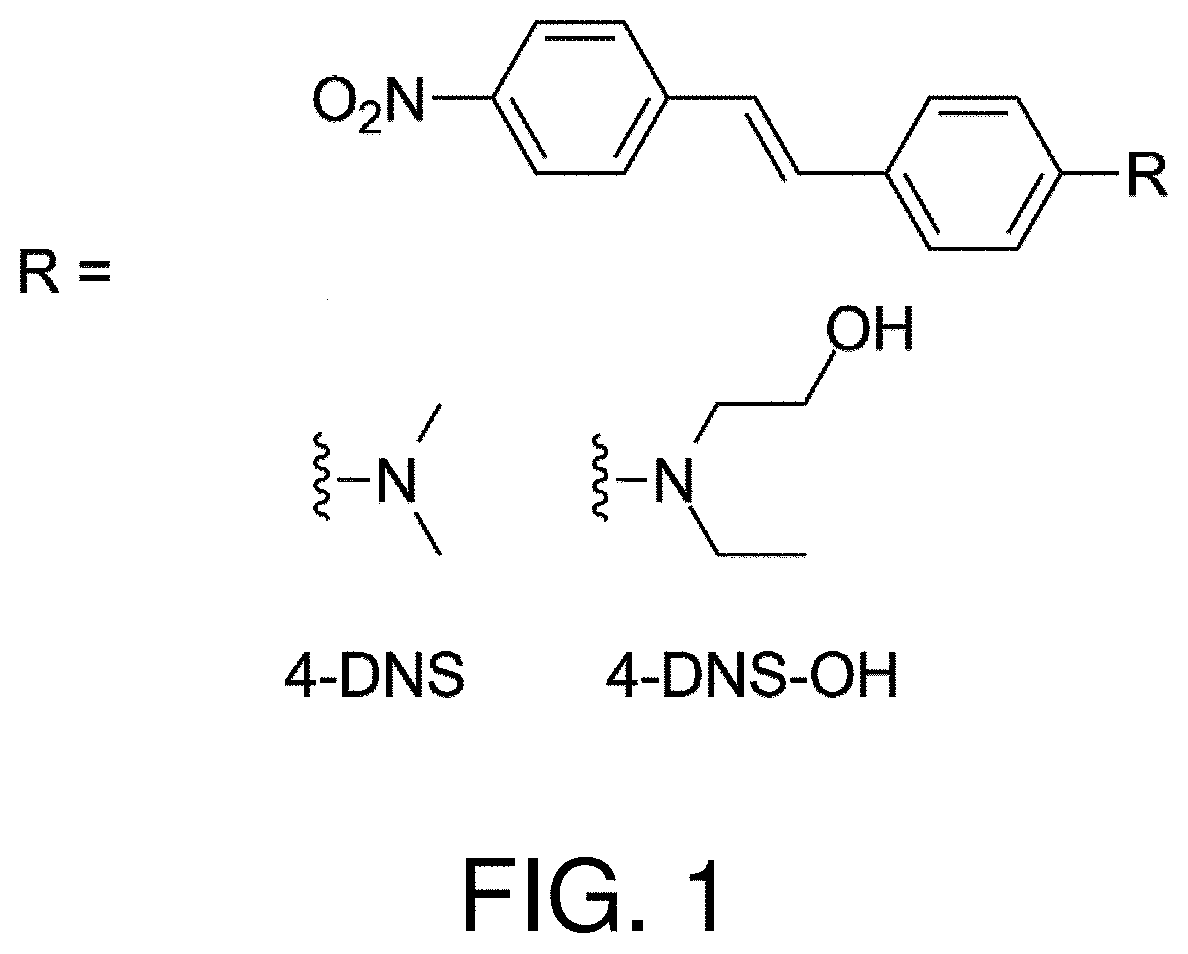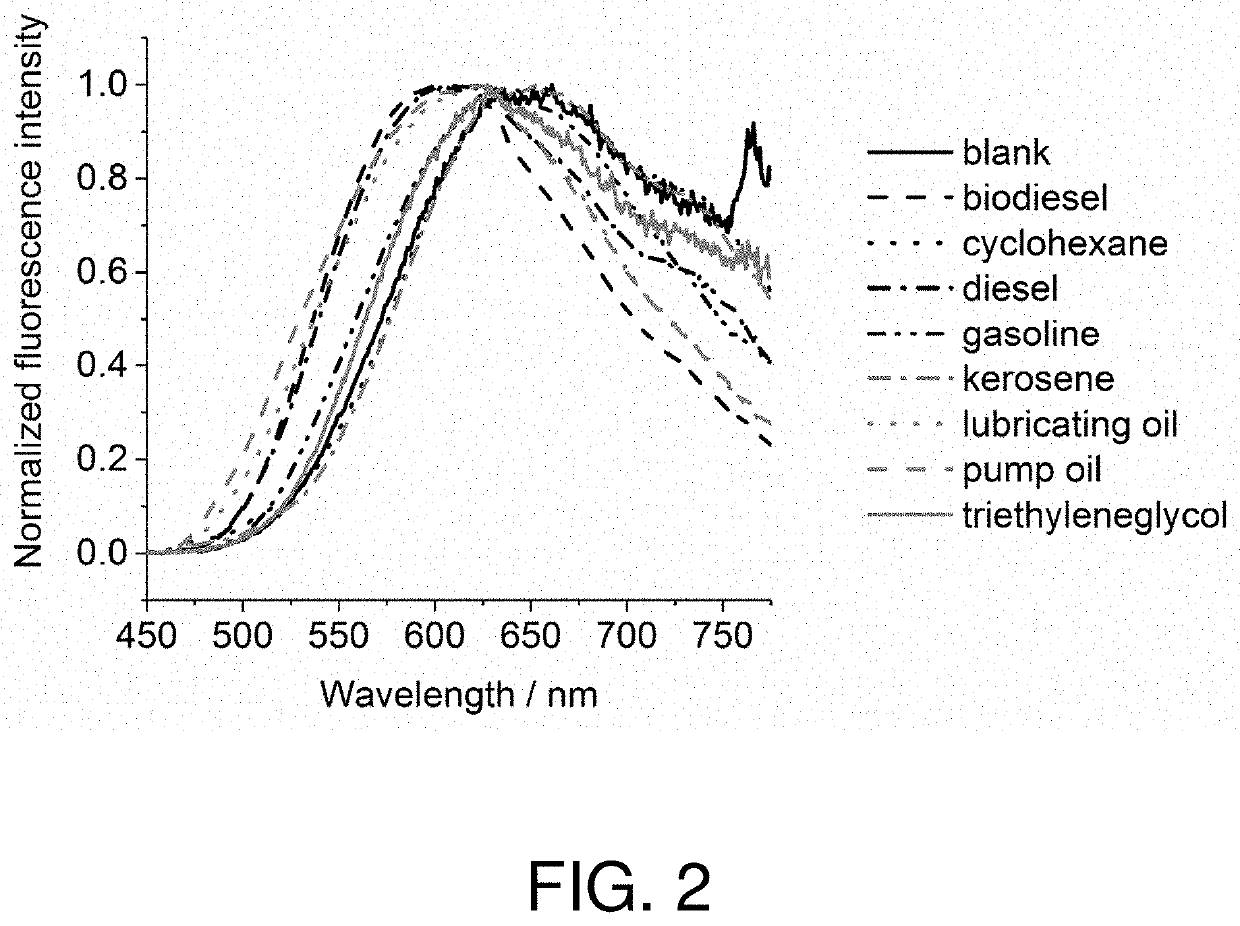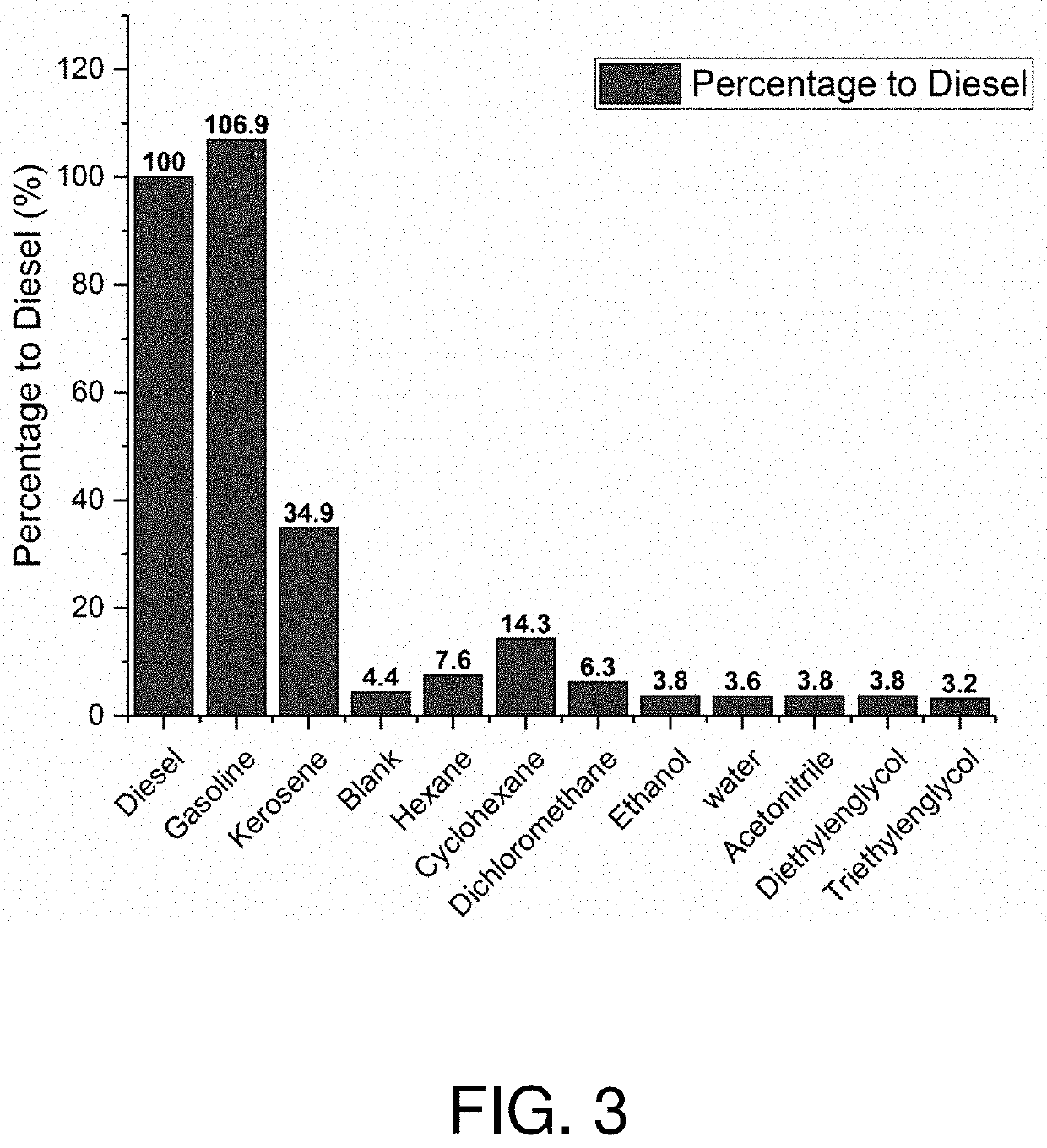Detection of hydrocarbon contamination in soil and water
a technology of hydrocarbon contamination and soil, applied in the field of detection of hydrocarbon contamination in soil and water, can solve the problems of high high environmental sensitivity, and high environmental pollution of oceans, rivers and lakes, etc., and achieve more robust sampling, reduce environmental sensitivity of molecular probes, and reliable results.
- Summary
- Abstract
- Description
- Claims
- Application Information
AI Technical Summary
Benefits of technology
Problems solved by technology
Method used
Image
Examples
Embodiment Construction
[0050]Herein, the terms “microenvironment” and “environment” may be used interchangeably in certain contexts, particularly when referring to the “environment” of a molecular probe. Herein, the terms “dye,” and “indicator” may be used, in context, synonymously with “molecular probe” particularly when referring to a nonpolymeric species that has environmentally sensitive photoluminescence. A molecular probe which is grafted to a substrate, as described herein, is to be regarded as a molecular probe. Molecular probes may be grafted, embedded, and / or adsorbed, for example, to polymeric substrates. Herein DNS may be used, in context, synonymously, for 4-DNS. Herein, DNS-OH may be used, in context, synonymously, for 4-DNS-OH.
[0051]Herein “photoluminescence” is used as a general term as understood by a skilled person to include fluorescence. Particularly in many of the examples herein, the photoluminescence mechanism is a fluorescence mechanism.
[0052]The term TPH herein may refer to total ...
PUM
| Property | Measurement | Unit |
|---|---|---|
| area | aaaaa | aaaaa |
| area | aaaaa | aaaaa |
| area | aaaaa | aaaaa |
Abstract
Description
Claims
Application Information
 Login to View More
Login to View More - R&D
- Intellectual Property
- Life Sciences
- Materials
- Tech Scout
- Unparalleled Data Quality
- Higher Quality Content
- 60% Fewer Hallucinations
Browse by: Latest US Patents, China's latest patents, Technical Efficacy Thesaurus, Application Domain, Technology Topic, Popular Technical Reports.
© 2025 PatSnap. All rights reserved.Legal|Privacy policy|Modern Slavery Act Transparency Statement|Sitemap|About US| Contact US: help@patsnap.com



